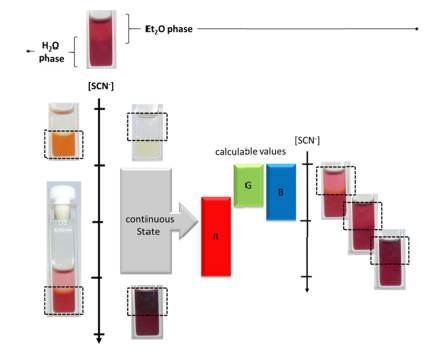We live in the technological age, surrounded by gadgets and gizmos with computer chips inside. They make our lives easier (mostly) and their speed just seems to keep increasing. But the computations only use binary code, zeros and ones and the speed at which they can be carried out will ultimately be limited by the size that the silicon circuits can be reduced to. What if computations could be done on a single molecule, which has been shown before, but also with the use of more than just two numbers? How about adding two and three to the available list of numbers? This is what Skrollan Stockinger and Oliver Trapp from the Ruprecht-Karls-Universitat Heidelberg detail in their recent Chemical Science paper.
They report a ternary/quaternary logic system based on a mixture of benzonitrile oxide with iron(III) ions and zinc ions which changes colour depending on the inputs. Using photographic recording and analysis of the Red/Green/Blue (RGB) values they can read out four different states: colourless, yellow, deep purple and a solution with precipitate present. This creates a system that gives the user a higher information processing density.
Two molecular logic systems with two independent input factors resulting in a continuous system and a system with a quaternary basis.
Does information processing really have to be restricted to zeros and ones? Using sodium thiocyanate ions rather than zinc ions the authors have created a continuous system. The sodium thiocynate creates a red complex and analysis of the RGB channels allow a range of concentrations to be detected which could be split up into any number of states for computation, rapidly increasing the information processing density. Therefore this continuous system could extend multi-valued logic beyond the ternary and quaternary systems described in the literature and the current paper.
Both systems show very good long-term stability and could find uses as a high potential storage medium with high data processing ability.
To find out the details of this work read the Chem. Sci. paper in full for free* today:
A Continuous and Multi Valued System as Molecular Answer for Data Processing and Data Storage
Skrollan Stockinger and Oliver Trapp
*Access is free untill 12.06.14 through a registered RSC account – click here to register











